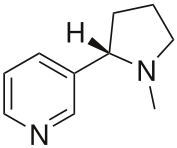One of the most commonly cited arguments against electronic cigarettes is that “there is no way of knowing what’s inside them.” Shocking as it may sound; you can rest assured that is far from true. Consumer safety regulations protect people from dangerous substances, and most respectable manufacturers send their products for third-party testing to further verify their safety for consumption.
SEE ALSO: Most common vapor content of an e-cig
In comparison to tobacco smoke, which has at least 5,000 chemicals (the actual figure is unknown), electronic cigarettes have a clear advantage because they only contain a handful of chemicals. The major ingredients of the nicotine solution used in the cartridges are propylene glycol (or vegetable glycerin), nicotine, water and approved food flavorings such as acetylpyrazine and malic acid.
Propylene Glycol

This chemical is FDA-approved for numerous purposes, including use in theatrical smoke machines, as a solvent for food colorings and as an additive in food. The liquid is colorless, odorless and tasteless, and its widespread use means it’s been studied extensively. It neither irritates the skin nor causes cancer, and its use in asthma inhalers is testament to its safety. Numerous pieces of research have confirmed its safety, including in vaporized form. Vegetable glycerin is sometimes used instead for the e-cig solution, but it has a similarly low risk profile – being an inherently similar chemical.
SEE ALSO: Why you shouldn't vape propylene glycol based e-liquid around your cat
Nicotine

Nicotine has a bad reputation, but this comes from the fact that “hangs with a bad crowd” when found in tobacco. It’s an alkaline chemical which is derived from tobacco, a stimulant somewhat similar to caffeine. A study looked at the effect of pure inhaled nicotine on rats, and after two years of exposure to nicotine for 20 hours a day and five days per week, the rats exposed to nicotine didn’t develop tumors more than the control group (which received no nicotine) nor were any negative effects noticed.
SEE ALSO: List of studies on nicotine
Water
No confusion here, just plain old H20.
Flavorings: Malic Acid

The flavoring mix in e-cigarettes can vary, but all of the ingredients used in e-cigarettes are approved as safe for human consumption, whether they’re added to foods or found naturally in them. Malic acid is a compound with a sour yet pleasant flavor which is found naturally in all fruits. It’s commonly used as a fruity flavor enhancer, in everything from food and drinks to things like cough syrups.
Flavorings: Acetylpyrazine
This is another commonly used food flavoring that is often included in chocolate-flavored e-cig cartridges and liquids. Acetylpyrazine is used in food products for its nutty, chocolate-like flavor and is also incorporated into fragrances.
Flavorings: Vanillin

Vanillin, as you may expect from the name, is a chemical found in vanilla beans which is used for vanilla-flavoring in food products. In e-cigs, it’s used in vanilla-flavored cartridges.
Trace Amounts: Nitrosamines
A 2009 FDA analysis of the ingredients in e-cigarettes revealed that tobacco-specific nitrosamines are present in some cartridges, which are known carcinogens. The press release left out the salient information presented by Michael Siegel, which reveals that nitrosamines are found in tobacco cigarettes at up to 1,400 times the quantities. This is equivalent to the amount of the chemicals found in FDA-approved nicotine patches. These are a natural product of the tobacco plant, and invariably leak through during the extraction process.
SEE ALSO: Are nitrosamines in e-cigs harmful?
Conclusion
It’s clear that the furor generated over the contents of e-cigarettes is sensationalist and unnecessary. The contents of the e-cig cartridges or e-juice are well-known, and there is nothing within them that puts users at anything other than extremely minor risk. The fact that FDA-approved nicotine patches also contain the same quantity of the only potentially dangerous chemicals you’ll find in an e-cigarette shows that the risk is absolutely minimal.

